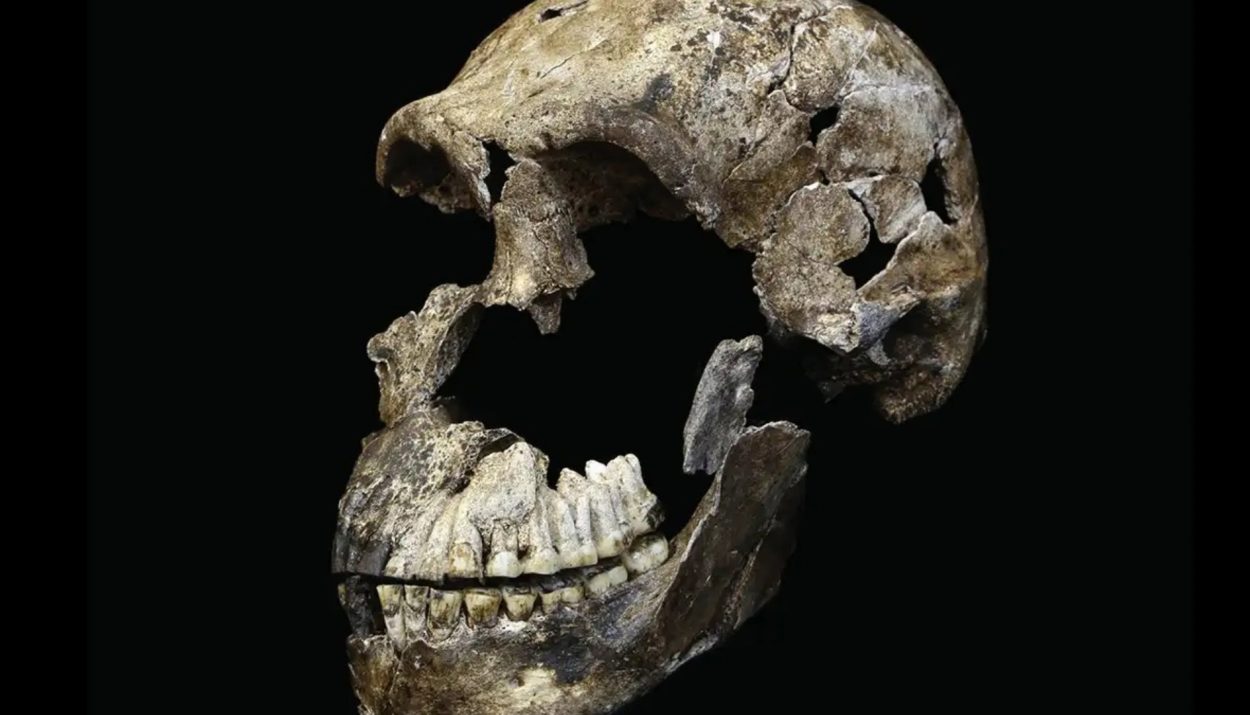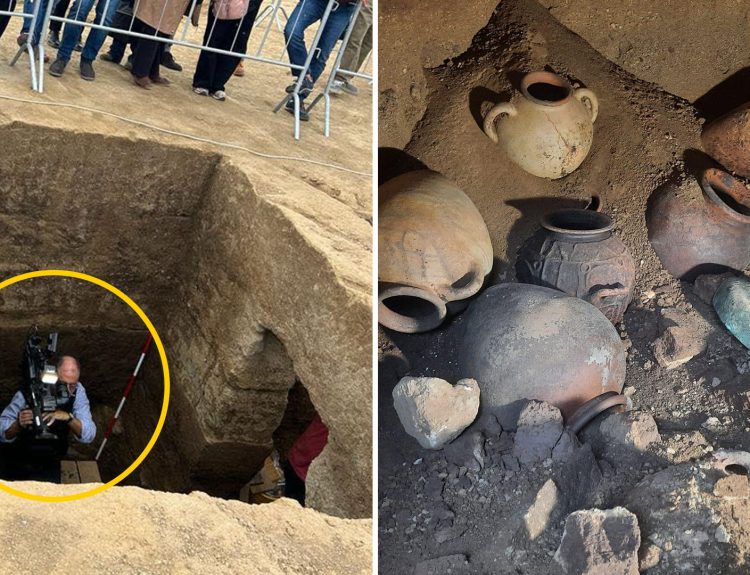Archaeologists and anthropologists have a set of indicators they use to determine how advanced and intelligent early human species were. Language, abstract reasoning, the development of art, and the establishment of social groups are all signs that the human brain has evolved beyond that of other mammals.
Another major indicator of advanced intelligence and higher-level thinking is burying the dead and demonstrating funerary practices. It was assumed that only the human species with large brains were capable of complex behavior. But a new discovery is changing what we know about the early human family tree.
Tracking Down the Origin of Humans
Roughly 30 miles northwest of Johannesburg, South Africa, lies the Cradle of Humankind. This is the location of the world’s largest deposit of ancient human ancestral skeletons. That makes it a mecca for paleontologists and a worthy inclusion to the UNESCO World Heritage Site.

Among the other notable discoveries made at the Cradle of Humankind was the most complete Australopithecus africanus skull ever found. This find took place in 1947 when John T. Robinson and Robert Broom found “Mrs. Ples,” the nickname for the skull.
Discovery in the Cradle of Humankind
The discoveries unearthed at the Cradle of Humankind have aided our understanding of our early origins. The cave systems here are a veritable trove of ancient hominin fossils that have helped shape our view of the human family tree.

It was here where anthropologists and archaeologists recently made a discovery that forced them to question conventional assumptions about our distant human cousins. What they found was the oldest burial site ever discovered, which is, itself, a noteworthy find. But when they realized that the skeletons did not belong to homo sapiens, it became groundbreaking.
A Stone Age Human Relative
Lee Berger, the lead paleoanthropologist working at the Cradle of Humankind, explained that his team unearthed the remains of several Homo naledi who had been intentionally buried about 100 feet below the ground in a cave.
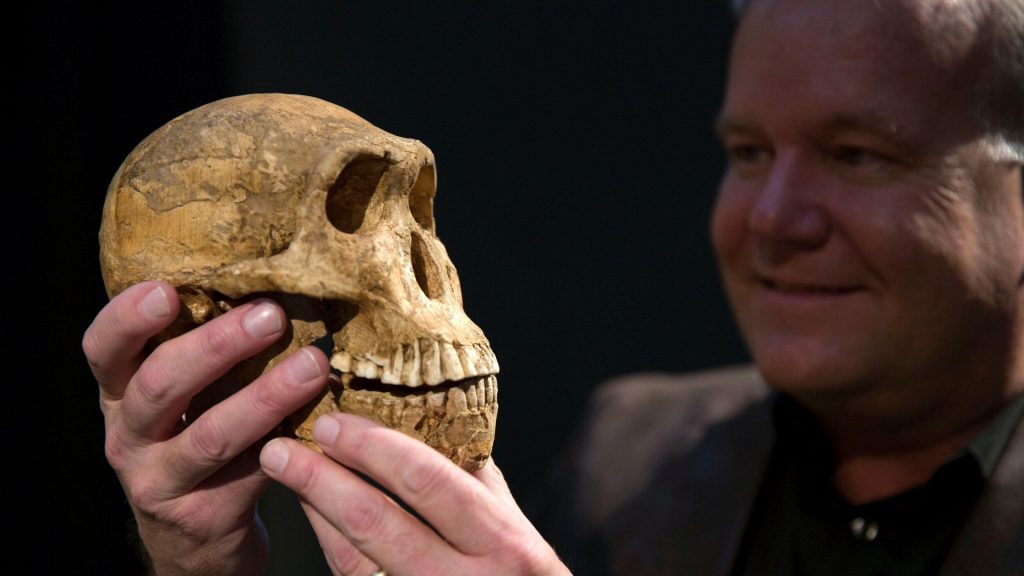
Berger and his colleagues wrote in an upcoming scientific paper, “These are the most ancient internments yet recorded in the hominin record, earlier than evidence of Homo sapiens interments by at least 100,000 years.”
Who Were the Homo Naledi?
A distant and extinct relative of modern humans, Homo naledi is a hominin species that was first discovered in 2013 in the same Cradle of Humankind where Berger and his team recently made their find. The fossilized remains of the previously unknown member of the human family tree showed characteristics of both primitive and more sophisticated hominins.
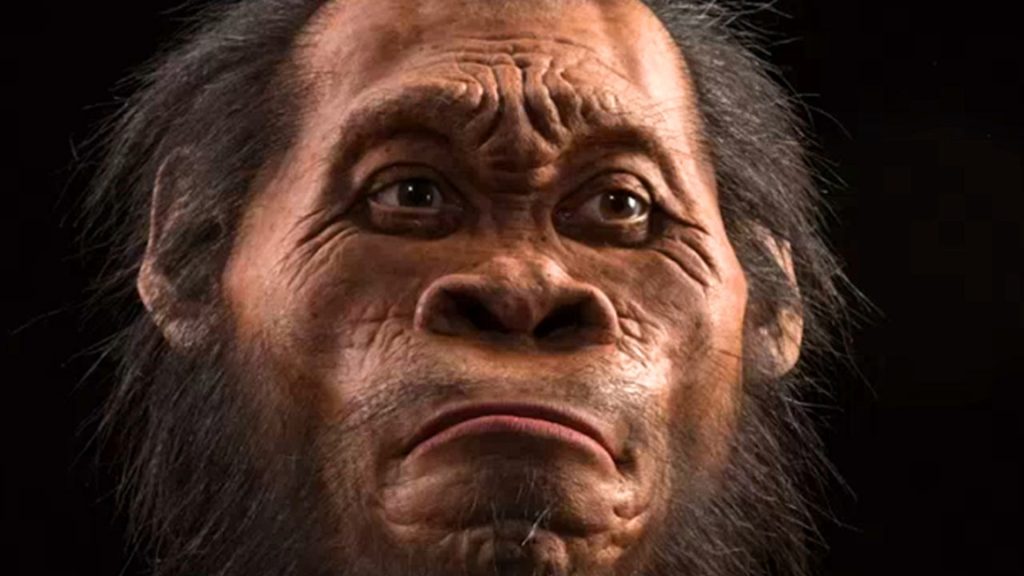
The Homo naledi remains in the Rising Star Caves, located within the Cradle of Humankind, were carbon dated to between 335,000 to 236,000 years old. They had small brain cavities – more like primates – with brains about the size of an orange. Adaptations on their hands and feet showed that Homo naledi likely walked upright on two feet, but also spent time climbing trees.
The Human Family Tree Is Not Linear
The more researchers learn about extinct human relatives and early hominin species, the more we see that human evolution did not follow a simple, linear path. The human family tree has many branches and is more complex and messier than initially thought.
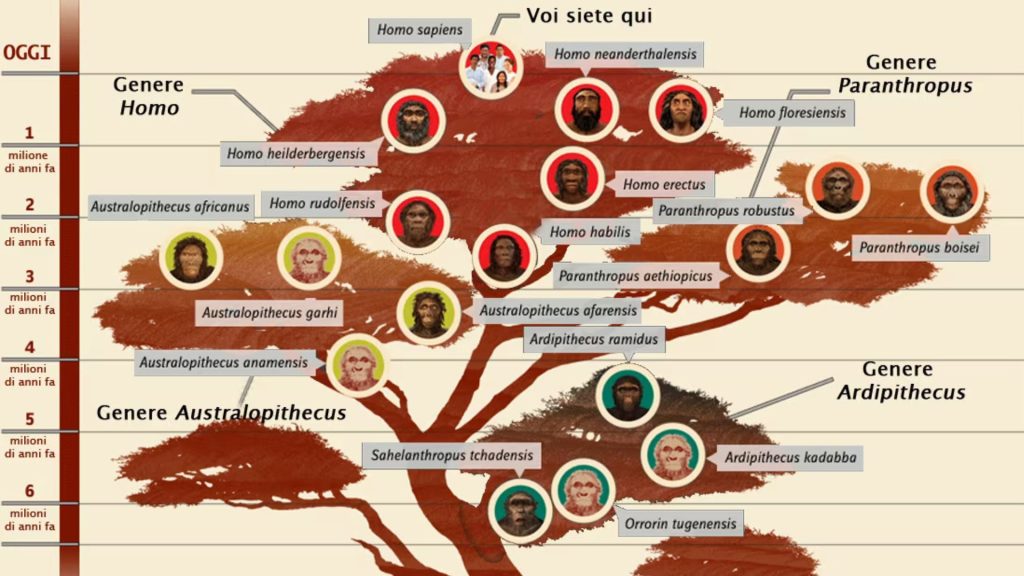
Extinct hominin species are categorized as either large-brained – like Homo sapiens and neanderthals – or small-brained species – like Homo australopithecus. When the Homo naledi species was discovered, it was classified as a small-brained species, although it had characteristics consistent with large-brained hominids. It forced anthropologists and scholars to reexamine the human family tree.
Large-Brained Versus Small-Brained Hominids
According to anthropologists, large-brained hominids demonstrated the use of tools, advanced problem-solving abilities, and developed multifaceted social hierarchies. They had spoken language and could think abstractly. On the other hand, small-brained hominids were more evolutionarily primitive.

Although they were hominins, small-brained hominid species were closer to primates. They were bipedal, however they were better suited to living among the tree branches than living on the ground. Until the discovery of Homo naledi, it was believed that small-brained hominids lacked the complex cognitive function of large-brained hominids.
Brain Size Matters
Scientists have determined that brain size played a crucial role in the evolution of humans. Small-brained hominids with more primitive brain structures were hardwired to find food, procreate, and avoid predators. They had limited creative problem-solving abilities and limited abilities for abstract thinking.
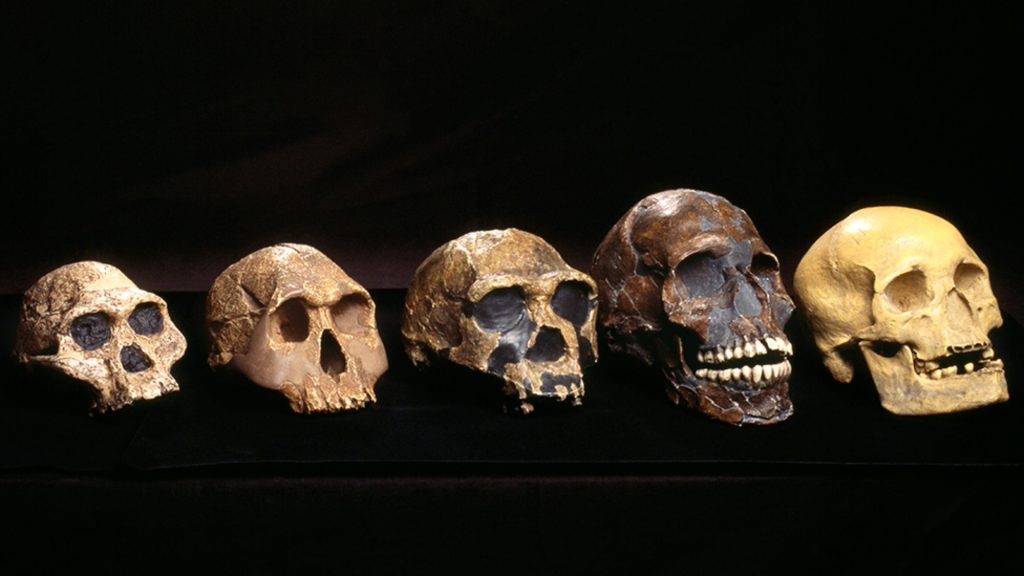
The increased size of the brain in some hominin species allowed for the development of language, complex problem solving, invention of tools, and highly developed emotions. Species with larger brains were better suited to adapt in order to survive.
An Archaeological Discovery That Doesn’t Fit the Mold
The newly unearthed burial site found in the Cradle of Humankind is an oval-shaped gravesite containing the skeletal remains of at least five individuals, all Homo naledi. The bones were found buried at a depth of about 100 feet.

Berger explained that the arrangement of the skeletons and the condition of the bones indicate that they were intentionally buried. They were not, for example, killed and covered by a landslide or collapsing cave.
“Mortuary Practices Were Not Limited to Homo Sapiens“
Researchers had long assumed that performing complex tasks related to symbolic meaning – such as burying the dead – was one of the marks of a more advanced hominin. It was thought that only large-brained hominid species had developed symbolic meaning-making.
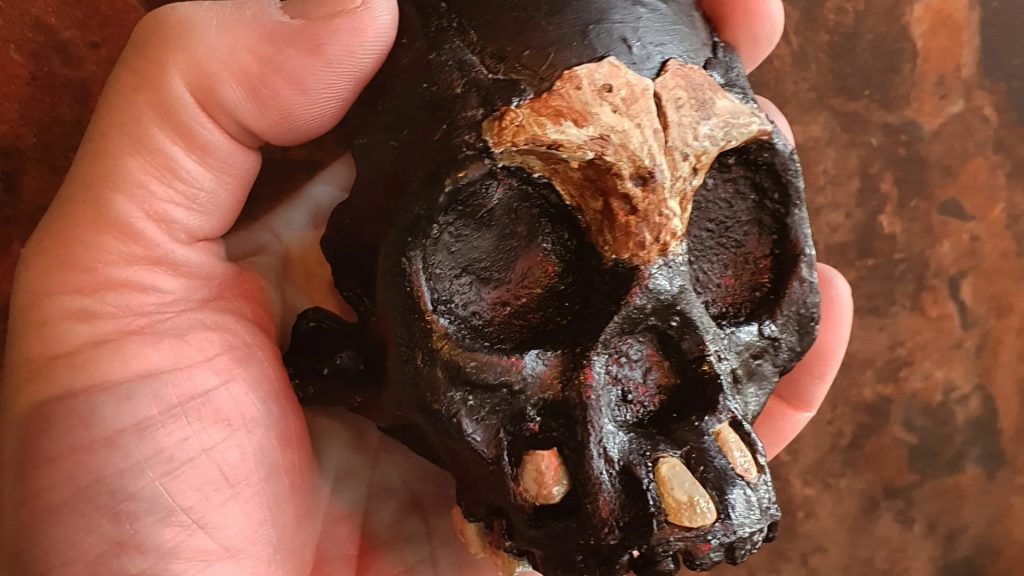
Small-brained hominids like the Homo naledi were not intellectually equipped to engage in funerary practices. Or so it was thought. As the researchers noted in their report, “These discoveries show that mortuary practices were not limited to Homo sapiens and other hominins with large brain sizes.”
Funerary Practices and Human Evolution
According to University of Arizona anthropology professor, Mary Stiner, the earliest known evidence of intentional internment dates back to the Middle Paleolithic Era. She explained in an article in Live Science, “By at least 120,000 years ago we have what we believe are deliberately buried human bodies.”
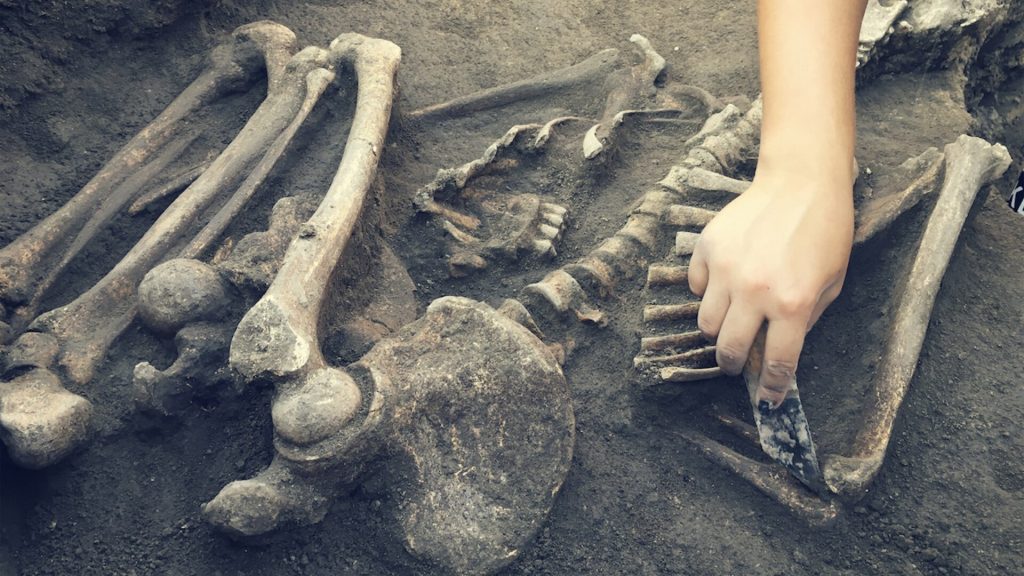
She added that Homo sapiens burial sites have been found, as well as Neanderthal burials. The scientific community is taking notice of the recent find in South Africa as it is the first example of a small-brained extinct human relative burying their dead … and it is a much older discovery. It pre-dates the oldest known Homo sapiens burial site by tens of thousands of years.
Could There Be Another Explanation?
It is possible that there is another explanation to account for the intentional burial of the five Homo naledi individuals found by Berger and his team in the cave system of the Cradle of Humankind. Perhaps the dead were not buried by their own kind.
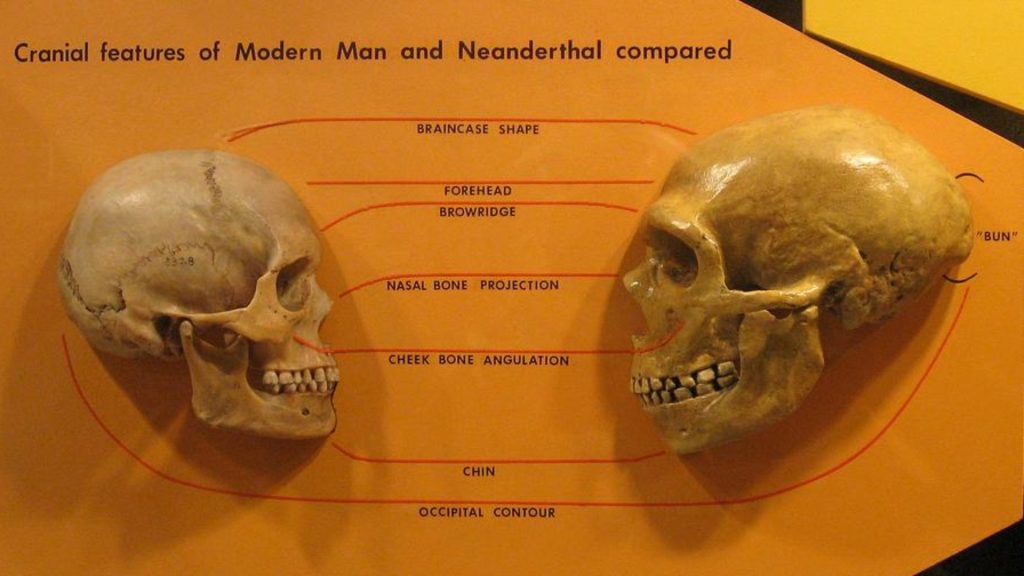
The fossilized bones of the Homo naledi were dated to between 335,000 to 236,000 years old. Anatomically modern Homo sapiens arose at approximately this same time. So far, no evidence has been found to show that both species interacted with each other, but it does introduce the possibility that Homo sapiens were the ones who buried the Homo naledi in the cave.
The Oldest Homo Sapiens Burials
As the report explains, prior to this discovery, the oldest known burial sites of human ancestors were unearthed in Africa and the Middle East. These sites were approximately 100,000 years old. The oldest sites were all exclusive to Homo sapiens.
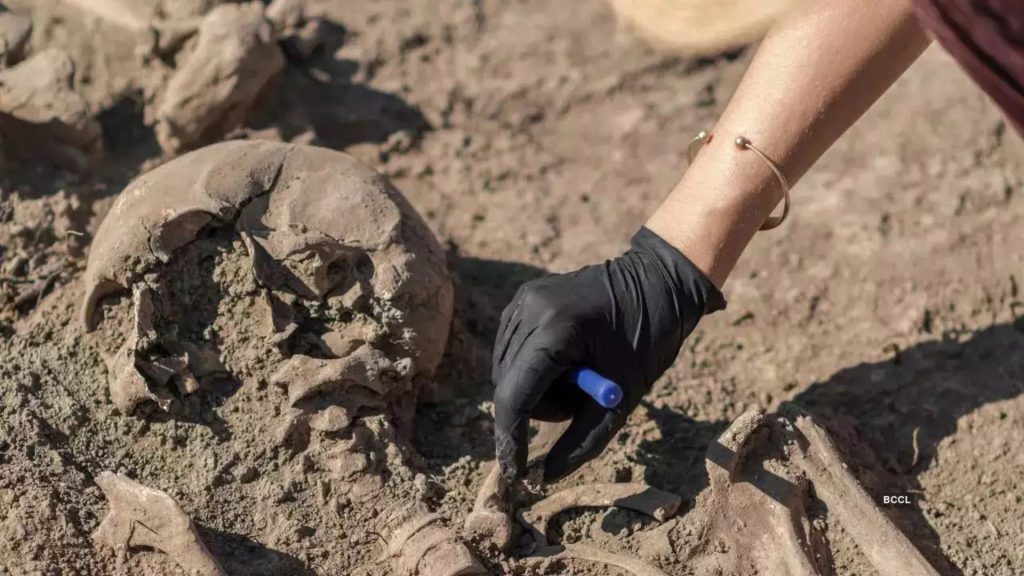
This naturally led to the assumption that funerary practices were first developed by Homo sapiens. The discovery made by Berger and his team, however, drastically changes the timeline and tells us that other hominin species were more intelligent and advanced than we thought.
“We’re Not That Special“
For so long, modern humans have held the belief that we were the smartest, most adaptable of all the early species of humans and that is why we are the only human species still walking the planet. Berger joked that, “Homo naledi tells us we’re not that special!”
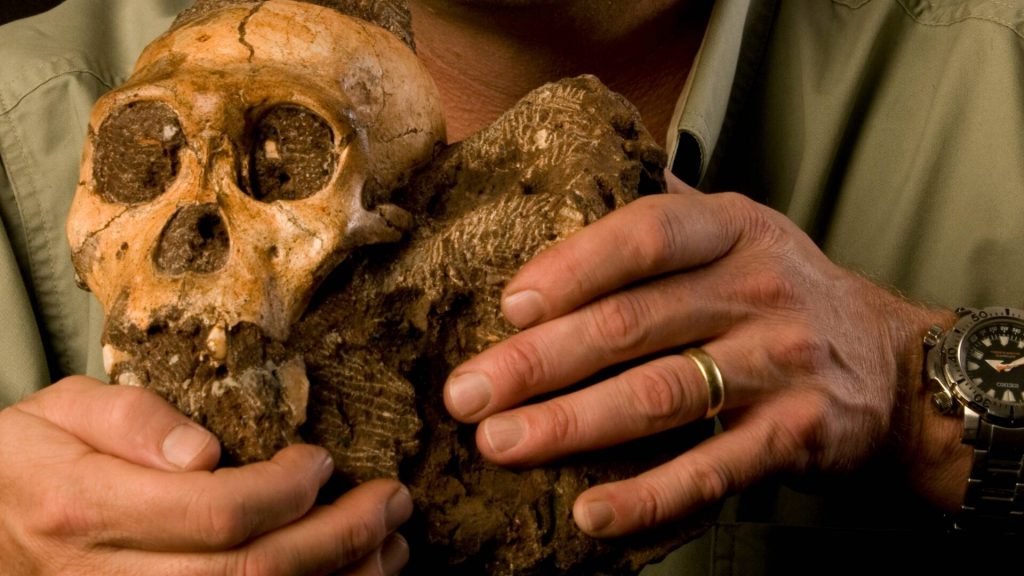
Berger’s research, which has been featured in National Geographic-produced documentary films and television shows, has revealed that Homo naledi was more human-like than we give them credit for being. They demonstrated cognitive behavior and emotional complexities … all the traits of modern humans.
Waiting on Peer Reviews
The findings that Berger and his team detailed in their upcoming report have not yet been peer reviewed, a standard practice in the scientific world. The initial reaction is that more evidence is needed before we can definitively state that early, small-brained hominids were capable of advanced thinking.
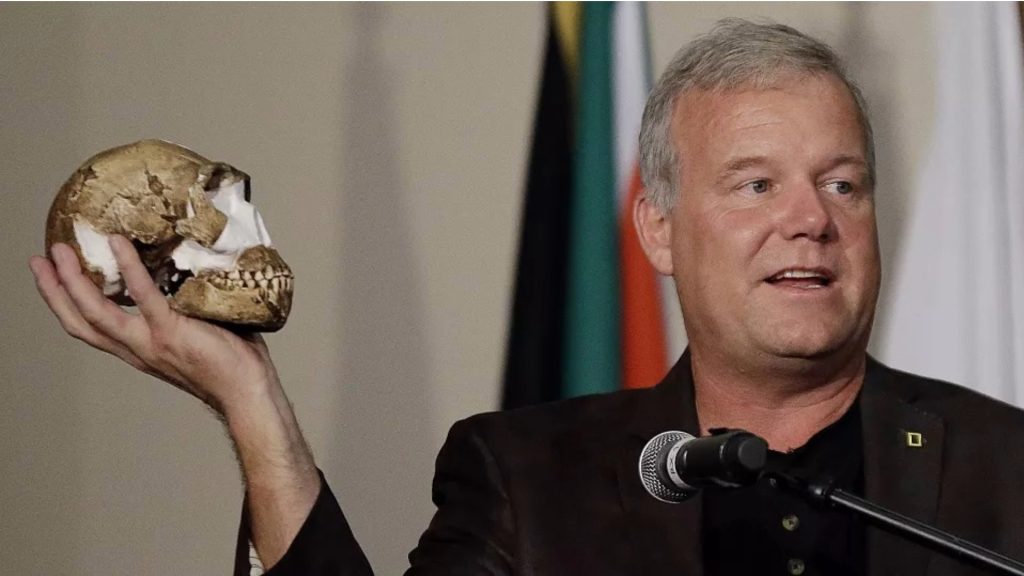
One thing is clear … Berger’s discovery is forcing researchers to rethink the timeline of human evolution and to reconsider the cognitive abilities of all early hominins. Although Rick Potts, the director of the Smithsonian’s Human Origins Program, was not involved in the discovery, he noted, “There’s still a lot to uncover.”

